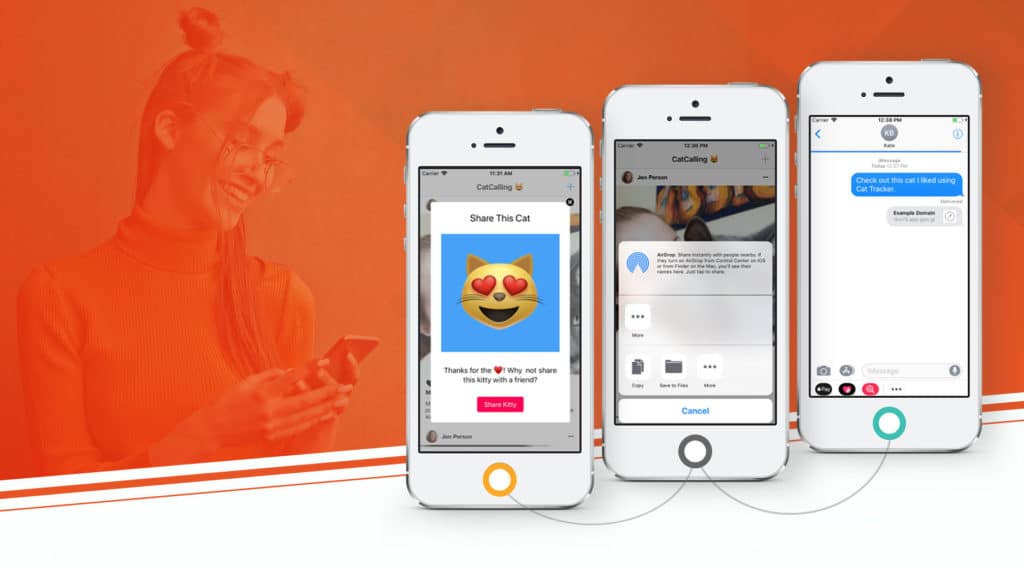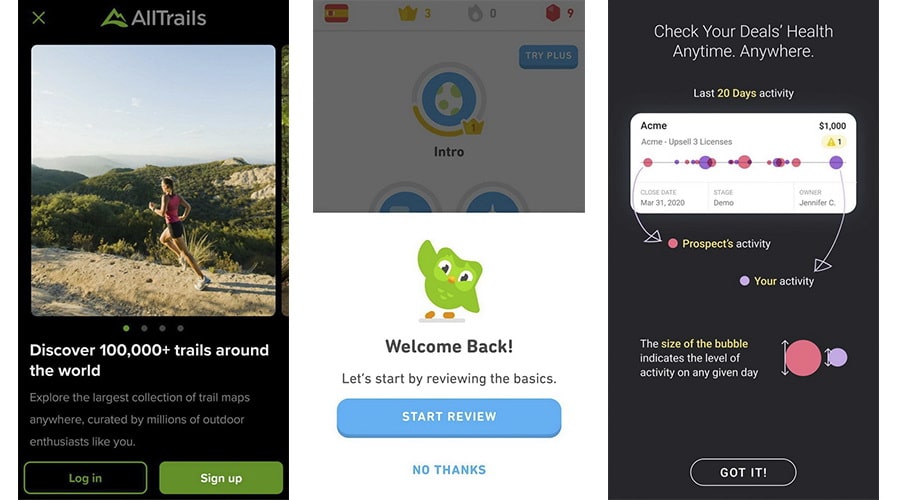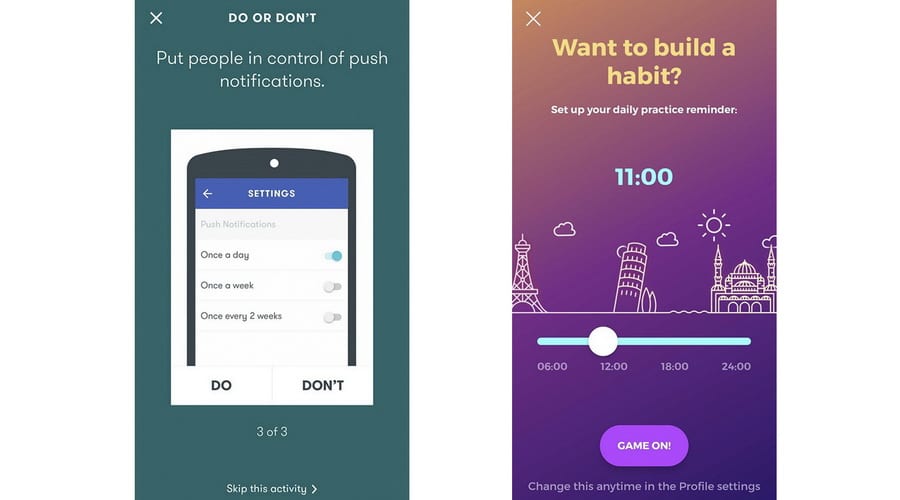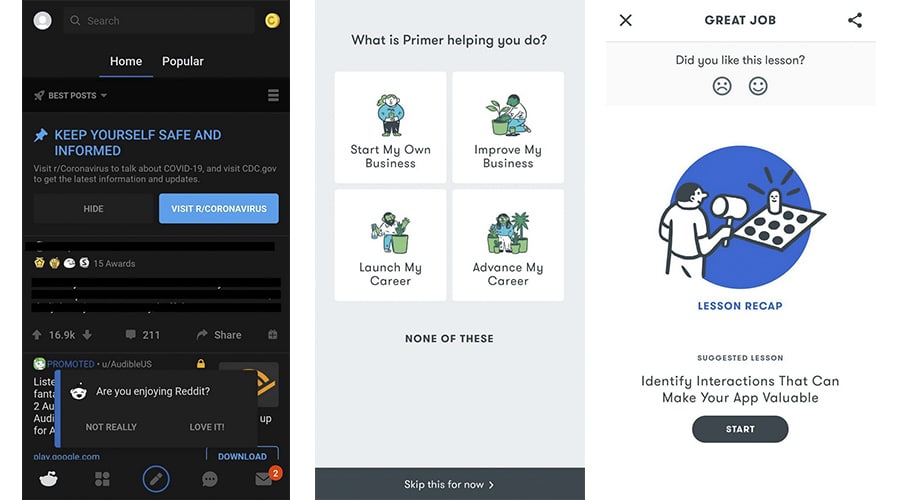How to Build Brand Loyalty With In-App Messages
by Saylee Joshi

In-app messages are targeted messages sent to a user when they are actively using the app. It’s an incredibly productive way to increase engagement with your users. Despite this ease of reach, in-app is the most underutilized marketing channel. Their ability to be leveraged on active applications makes them a key component of cross-channel marketing strategy. Moreover, with the right engagement, you can build brand loyalty in your customer base.
In-app messages do not require the user’s explicit opt-in; this offers endless possibilities for an app to engage with users without invading their space. Apps that send in-app messages see higher retention.
In-App Messaging to Boost User Experience
Let’s look at some of the ways you can use in-app messaging to boost user experience.
Onboarding
App introductions are not only for your desktop and web apps but can also be used effectively in mobile apps. Most mobile apps are deleted within 90 days of their install. When the user first installs and opens the application, that’s your chance to stand out, convey your message, and connect with your end-user.
Here are some examples to help you visualize your onboarding strategy.

From left to right:
- All Trail’s onboarding flow
- Duolingo welcomes users on their every visit
- Gong highlights their key features on launch
Here are a few things to cover during onboarding:
- Introduce the user to your app – Tell them your story, your mission.
- Get them familiar with the features of the application – highlight the essential features. Show them how to use the app.
- Use in-app to welcome users back to the application and help them pick up where they left off.
Make your goal during the onboarding to make the user’s experience enjoyable and educational.
App Permissions
Most apps require additional permission to personalize app contents, such as push, location, and IDFA. Push messages are a great way to bring users back to your app. To get users to opt into these settings, use in-app messages to explain how you will be using the app permissions and why they need to be enabled, adding the trust to build a strong relationship with your end-user.

From left to right:
- Learn with Google Primer
- Drops uses in-app to set preferences
Along with app permissions, encourage your users to set their frequency preference. In this age of constant digital distraction, giving power to the user helps strengthen the bond between your app and your users. Knowing the best time to communicate with your end-user can boost your push open rate and in-app engagement rate, resulting in an increased number of MAUs.
Incentives
The most important metric for all app marketers to track is retention. Loyal customers are essential for app growth. As consumers live moment to moment, marketers need to capture the insightful data from these moments and motivate users, creating prolonged sessions.
To do so, collect the right information and appreciate users for their time by:
- Rewarding your users with personalized and timely offers for their loyalty.
- Incentivizing them for their activities in the app with coupons, discounts, and promotional offers.
- Sharing added incentives for using a mobile app.
- Gamifying certain aspects of a mobile app to encourage users to perform specific actions.

From left to right:
- Lose It promotional in-app
- Fastic’s gamification
In-app messaging is a great way to send rewards on action-based triggers instantly. This improves brand image and creates a consistent optimal experience for users.
Feedback
Mobile apps have revolutionized the way users engage with your brand. In-app messages provide a unique way to seek feedback at different stages of a user’s app journey. Feedback or survey in-app messages offer a convenient way for you to gather essential customer feedback.
The most common causes behind negative brand sentiment are poor experience, technical difficulties, and lack of onboarding. By gathering valuable feedback, you can learn about your customer’s key habits and usage in the app. These insights can empower you to improve your products and services. Positive brand sentiment leads to increased MAUs, more in-app conversions, and a loyal consumer base.

From left to right:
- Feedback in-app pop-up in Reddit app
- Google Primer in the app messages to gather feedback
How to Get Started With Your In-App Strategy
Start by asking what key user moments are essential to your business. Identify the qualifying actions, and decide the right in-app form for the interaction.
Best practices for in-app messages in your marketing strategy:
- Set clear goals and make sure your messaging aligns with them.
- Determine the right in-app trigger to communicate with users.
- Personalize the in-app message for each user.
- Choose the correct placement of your in-app message.
- Do not over-communicate. It is crucial to identify the right triggers in the journey without intruding on the user’s digital space.
Wrapping Up
Mobile users utilize an app for its convenience. To create a truly engaging experience, you need to offer personalized content in the app. Building such a personalized and customized experience can be tedious and resource-intensive work. In-app messages come in handy in this situation. In-app provides personalized content to the user, building deeper relationships between your brand and every customer.









